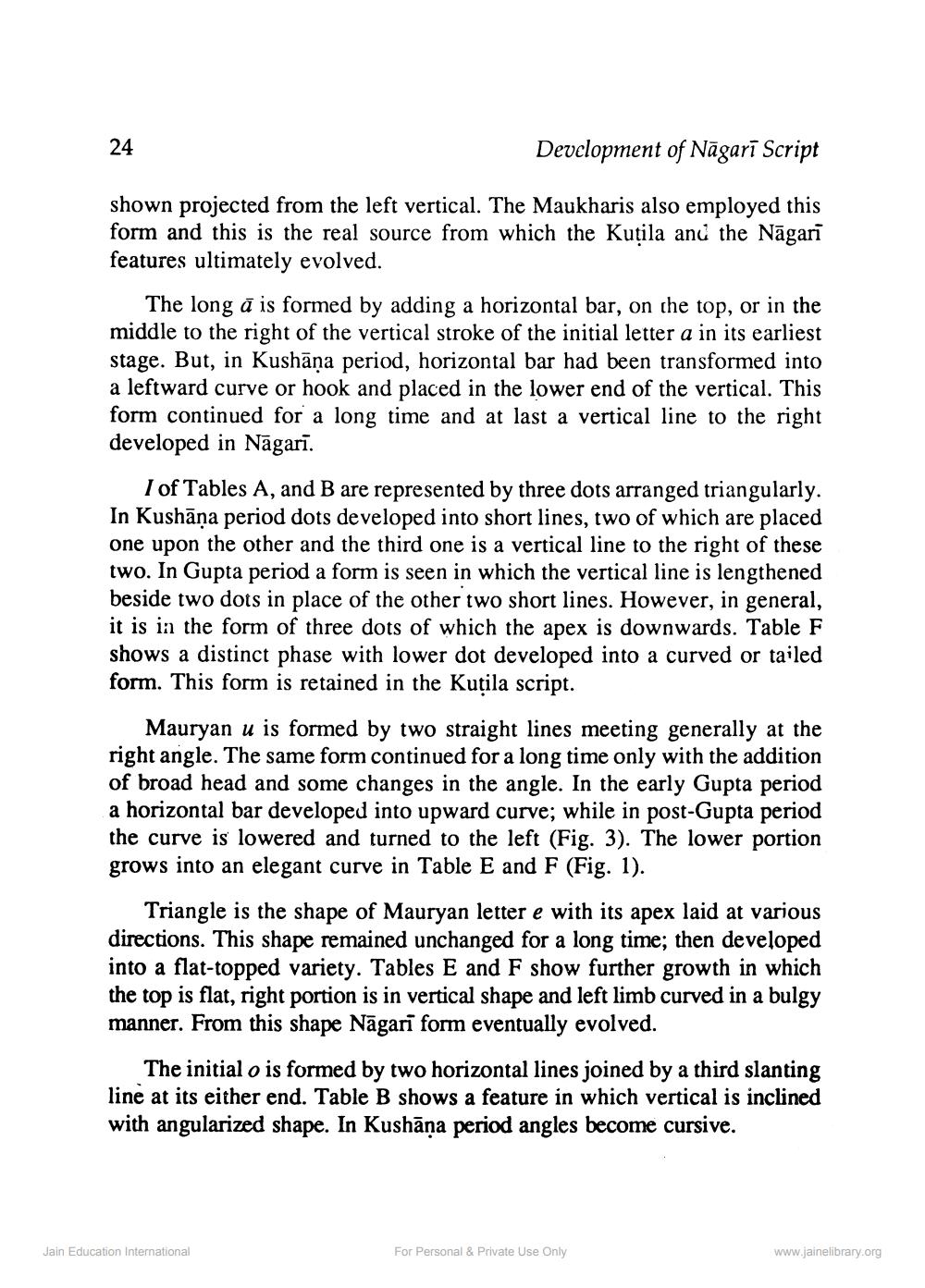________________
2424
Development of Nāgarī Script
shown projected from the left vertical. The Maukharis also employed this form and this is the real source from which the Kutila and the Nagarī features ultimately evolved.
The long a is formed by adding a horizontal bar, on the top, or in the middle to the right of the vertical stroke of the initial letter a in its earliest stage. But, in Kushāṇa period, horizontal bar had been transformed into a leftward curve or hook and placed in the lower end of the vertical. This form continued for a long time and at last a vertical line to the right developed in Nāgarī.
I of Tables A, and B are represented by three dots arranged triangularly. In Kushāņa period dots developed into short lines, two of which are placed one upon the other and the third one is a vertical line to the right of these two. In Gupta period a form is seen in which the vertical line is lengthened beside two dots in place of the other two short lines. However, in general, it is in the form of three dots of which the apex is downwards. Table F shows a distinct phase with lower dot developed into a curved or tailed form. This form is retained in the Kutila script.
Mauryan u is formed by two straight lines meeting generally at the right angle. The same form continued for a long time only with the addition of broad head and some changes in the angle. In the early Gupta period a horizontal bar developed into upward curve; while in post-Gupta period the curve is lowered and turned to the left (Fig. 3). The lower portion grows into an elegant curve in Table E and F (Fig. 1).
Triangle is the shape of Mauryan letter e with its apex laid at various directions. This shape remained unchanged for a long time; then developed into a flat-topped variety. Tables E and F show further growth in which the top is flat, right portion is in vertical shape and left limb curved in a bulgy manner. From this shape Nāgarī form eventually evolved.
The initial o is formed by two horizontal lines joined by a third slanting line at its either end. Table B shows a feature in which vertical is inclined with angularized shape. In Kushāṇa period angles become cursive.
Jain Education International
For Personal & Private Use Only
www.jainelibrary.org




